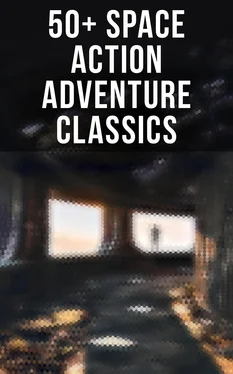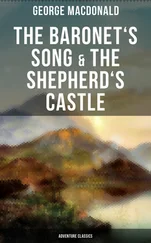The Joint Commission for replanning the world found itself therefore with three correlated groups of possibility challenging its spirit of adventure. A new flora of several thousand species was awaiting release from the experimental grounds, and this was only the easiest of the apparently limitless possibilities of animal and vegetable variation that experimental biology was taking up. A huge and hitherto unsuspected wealth of mineral substances was ready to come out of the deep-lying rocks and refresh the rather limited and jaded resources of the contemporary soil. And alterations in the composition and movements of the atmosphere were no longer inaccessibly beyond human effort. The obstruction of individual ownership and localized governments had been swept away for ever. In that respect the Second Council had beyond question triumphed. But the very vigour with which it had done its task for man and the world as they were, and still in effect are, had cleared the ground for such an unprecedented inventiveness as is now rapidly altering not only the face but the very substance of life.
The Replanning Commission set about its task with the leisurely energy of a body under no stress of necessity. “Life is quite good as it is,” runs the Introduction to its Draft Plan. “But it is part of the fundamental goodness of life that we have as much incessant novelty as we desire at our disposal. Due proportion must be our perpetual care. Want of proportion in the development of new things was the general cause of the great bulk of human suffering and frustration during the past five centuries. We have now an organization of controls that can restrain anything like the spasmodic mercenary enterprise, without plan or balance, that let loose disaster in the early twentieth century. We can afford to look before we leap and measure within quite close limits the tale of consequences we set going. In the end we may find that there was very considerable justification for the restraint put by our Supreme Council upon the immediate application of recent inventions, and particularly of recent biological inventions, which might otherwise have precipitated very similar but even more fundamental and catastrophic disproportions to those which overwhelmed the capitalist civilization of the nineteenth century.
“The particular field in which we propose a continuation of restraint is in the application of the rapidly advancing science of genetics to the increase of variability so far as human beings, and probably some other of the higher mammals, are concerned. We believe that the general feeling of the race is against any such experimentation at present. Under the Second Council the painless destruction of monsters and the more dreadful and pitiful sorts of defective was legalized, and also the sterilization of various types that would otherwise have transmitted tendencies that were plainly undesirable. This is as far, we think, as humanity should go in directing its racial heredity, until our knowledge of behaviour has been greatly amplified. For an age or so we can be content with humanity as it now is, humanity no longer distressed and driven to cruelty by overcrowding, under-nourishment, infections, mental and physical poisons of every sort. There is a rich mine of still greatly underdeveloped capacity in the human brain as it is, and this we may very happily explore by means of artistic effort, by scientific investigations, by living freely and gaily, for the next few generations. Normal human life can be cleansed, extended and amplified. With that we propose to content ourselves. Even upon this planet we have millions of years ahead before there can be any fundamental change in our environment.
“Directly we turn from humanity to other forms of life it is manifest that a most attractive realm is opening to us. We may have new and wonderful forests; we may have new plants; we may replace the weedy and scanty greensward of the past by a subtler and livelier texture. Undreamt-of fruits and blossoms may be summoned out of non-existence. The insect world, on which so much of the rest of life depends, may be made more congenial to mankind. The smaller fry of life and the little beasts and the birds can be varied now until they all come into a tolerable friendship with ourselves. As our hands lose their clumsiness we may interfere more and more surely with the balance of life. There is no longer fear of abundance now that man is sane.
“Our planning of human activities for the next few generations will involve no fundamental changes at all for humanity. It will be a keying-up of the sort of life for which our race, however darkly, confusedly and unsuccessfully, has always striven. At present deliberate weather-control is too big a task for us, but we believe that a sure weather calendar for a year or so ahead is now becoming possible. An immense series of enterprises to change the soil, lay-out, vegetation and fauna, first of this region and then of that, will necessitate a complete rearrangement of the mines, deep quarries, road network and heavy sea transport of the globe. None of this need be ugly or repulsive, even in the doing; it can all be made intensely interesting. Engineering structure, which was once clumsy and monstrous, is now becoming as graceful as a panther. Industrial enterprises that formerly befouled the world with smoke, refuse and cinder heaps, are now cleaner in their habits than a well-trained cat. The world lay-out of the Second Council, designed apparently for a static society, will be to a large extent swept aside by our new operations. And no doubt our achievements in their turn will give way to still bolder and lovelier enterprises.”
So ran the Introduction to what is known as the Keying-up Plan of 2060. To-day we are most of us still immersed in its realization. It has given the world occupation without servitude and leisure without boredom. When we have had enough of our own work for a time we fly off — or walk round the corner — to see what other people are doing. The world is full of interest and delight, from the forest gardens of the Amazons with their sloths, monkeys and occasional pumas and alligators to that playground of the world, the snowfields of the Himalayas. We can arrange to take a turn with the meteorological observers in the upper air, or tune our lungs for a spell in the deep-sea galleries below the rafts of Atlantis. There we can see the great cephalopods of the middle levels coming for their food or watch the headlong growth of a giant pearl.
We are already so accustomed to grace, beauty and variety in all the details and general forms about us that it is only by turning over the pictures and records of seventy years ago that we realize how relatively uneventful were the first decades of human unity. At first man seems to have been so exhausted by his escape from massacre, disease, economic waste and general futility, and so terrified by the thought of any relapse into the old confusions, conflicts and economic cannibalism, that he was capable of nothing but order. But he gathers courage. It is not only our world that is being keyed up, but ourselves.
Table of Contents
Among the “deferred projects” that lie behind our current activities, and second only to the system of schemes for inducing and directing a great increase in human variability, is the complex of plans that have been drawn out to alter the terrestrial contours. Here again is something far too great and dangerous for our present wisdom, but something which it seems inevitable our race will ultimately attempt.
At present, and for many generations yet, we are still the creatures and subjects of geography; the oceans and great mountain chains condition our lives. They determine habitats, which again determine the human type best adapted to live for the greater part of its life in this or that region. Every kind of us, dark or fair, thick-set or slender, black or buff, has its own distinctive best place in which to rear its children and work and rest. It may roam the earth as it will, but only in certain regions is it altogether at home. No type is at home everywhere. There is no universal man. A universal type of man would be possible only on a flat and uniform earth. There is a necessary variety in humanity which no one now desires to diminish.
Читать дальше











